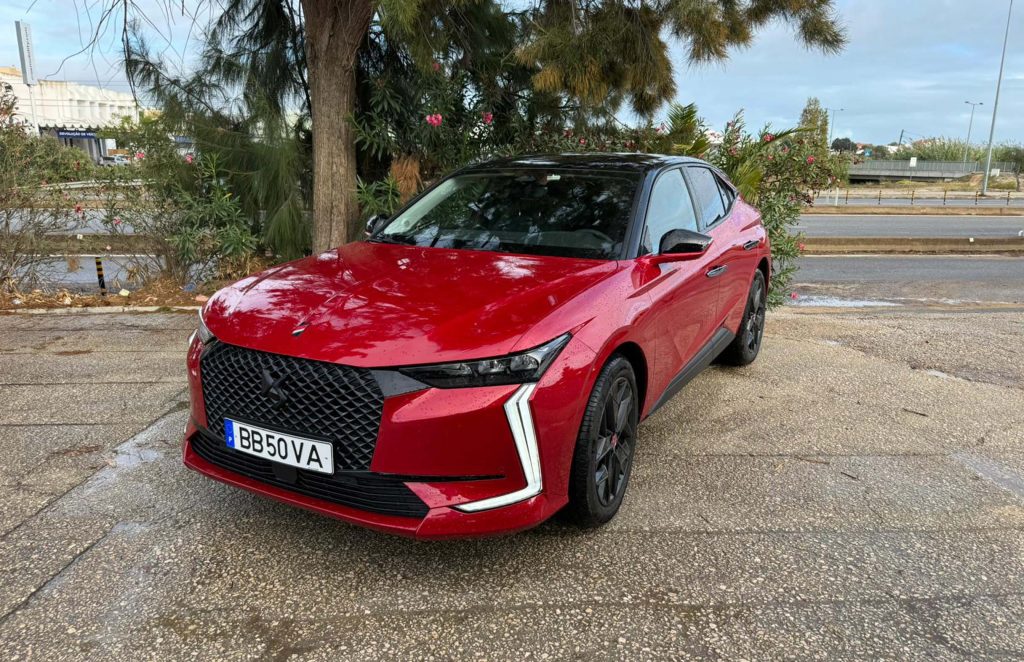Renting a car in Faro was one of the best decisions I made during my trip to the Algarve. The freedom to explore the scenic coastlines, picturesque villages, and hidden beaches at my own pace truly enhanced my experience. While Faro itself is a beautiful city with plenty to offer, having a car opens up the opportunity to discover lesser-known spots and venture off the beaten path. In this guide, I’ll share my personal experience of renting and driving in Faro, along with tips and advice for making the most of your car rental.
Give Your Tech a Second Life
Give your devices a second life with Gazelle.com
Sell your old tech or buy certified pre-owned phones and laptops — saving money while reducing e-waste.
Smart for you. Good for the planet.
Why Rent a Car in Faro?
Before diving into the practical aspects of renting and driving, let me explain why renting a car in Faro is worth considering. Faro serves as a gateway to the Algarve, Portugal’s stunning southern region known for its golden beaches, dramatic cliffs, and charming white-washed towns. While public transport is available, it doesn’t offer the same flexibility as having your own car. I found it incredibly convenient to drive to remote beaches, small villages, and natural parks without worrying about bus schedules or missing out on scenic routes.
One of the highlights of having a car was visiting Praia da Marinha, one of the most iconic beaches in the Algarve, located about 50 minutes from Faro. The drive itself was an adventure, passing through rolling hills and olive groves before arriving at the breathtaking coastline. I could stop wherever I wanted, take detours to explore small towns, and enjoy the Algarve at my own pace. Without a car, reaching these spots would have been more difficult and time-consuming.
Booking My Rental Car: What You Need to Know
Choosing the Right Rental Company
There are several options when it comes to renting a car in Faro, from well-known international companies like Hertz, Avis, and Europcar to local providers like Zitauto or Faro Car Hire. After doing some research, I decided to go with a local company, Zitauto, which had great reviews for both pricing and customer service.

The booking process was smooth and straightforward. I made my reservation online through their website about two weeks before my trip, which I recommend doing to secure the best rate. Faro is a popular destination, especially during the summer, so booking in advance is essential.
What Documents Do You Need?
To rent a car in Faro, you’ll need to provide the following:
- Valid Driver’s License: If you’re from the EU, your regular driver’s license will suffice. For travelers from non-EU countries, an International Driving Permit (IDP) might be required. I’m from the US, so I brought along my IDP, though I wasn’t asked for it when I collected the car. Still, it’s better to have it just in case.
- Passport: A form of ID is necessary for the rental process.
- Credit Card: Most car rental companies in Faro require a credit card for the deposit. Be prepared for this, as the deposit can range from €300 to €1,000 depending on the car type and insurance coverage.
Insurance Options
The rental company will offer various insurance options, and I’d highly recommend opting for full coverage or at least reducing the excess (the amount you’d pay in case of damage). While the roads in Faro and the Algarve are generally well-maintained, accidents can happen, and it’s better to be safe than sorry.
I opted for full insurance coverage, which added about €10 per day to my rental cost but gave me peace of mind knowing I wouldn’t be hit with hefty fees if something went wrong. Some credit cards offer rental car insurance, so it’s worth checking with your provider before you travel to see if you’re covered.
Costs and Car Types
Renting a car in Faro is relatively affordable compared to other European destinations. For a compact car, prices range from €20-€40 per day depending on the season and the rental company. I rented a Fiat 500, which was perfect for navigating the narrow streets of Faro and parking in tight spots. If you’re planning on exploring rural areas or heading to the mountains, consider renting something with a bit more power, like an SUV.
One thing to note is that most rental cars in Faro come with manual transmission. If you’re used to driving an automatic, make sure to specify that when booking, as automatics tend to be more expensive and in limited supply.
Picking Up and Returning the Car
At Faro Airport
Most rental companies have offices at Faro Airport, which is convenient if you’re flying into the city. After landing and clearing customs, I headed to the car rental area, which is just a short walk from the arrivals terminal. Zitauto’s office was easy to find, and the staff were friendly and efficient. After signing the paperwork and checking the car for any pre-existing damage (which I recommend doing thoroughly), I was on the road in less than 30 minutes.

Returning the Car
When it was time to return the car, I appreciated the flexibility that Zitauto offered. I could drop the car off either at the airport or at their office in the city center. Since I was flying out, I chose the airport, and the return process was just as smooth as pickup. A quick inspection of the vehicle, and I was good to go. If you’re returning the car with a full tank of gas (as per the rental agreement), make sure to fill up at one of the petrol stations near the airport to avoid extra charges.
Driving in Faro: My Experience and Tips
Navigating the Roads
Driving in Faro itself was relatively stress-free, especially compared to larger European cities. The roads are well-marked, and traffic is generally light outside of rush hours. However, the old town can be tricky to navigate due to its narrow, cobblestone streets. I found myself avoiding this area when driving and opted to park near the marina and walk to the old town instead.
Parking in Faro
Parking in Faro is a mix of free and paid options. There are several underground parking garages near the city center, which charge around €1-€2 per hour. I used the Parque da Pontinha, a centrally located parking garage, which was affordable and safe. If you’re staying in the city, check whether your accommodation offers parking or has a deal with a nearby garage, as street parking can be limited.
In more rural areas outside of Faro, parking was rarely an issue. Many beaches and tourist attractions offer free parking, although during peak season it can get crowded.
Toll Roads in the Algarve
One thing to be aware of when driving in the Algarve is the A22 toll road (also known as the Via do Infante), which runs parallel to the coast and is the quickest way to travel between cities like Faro, Albufeira, and Lagos. The tolls are electronic, so there are no booths to pay as you drive. Instead, your rental car will come equipped with a toll transponder that tracks your usage. The rental company will either charge you directly for the tolls at the end of your trip or offer a prepaid option.

I opted for the prepaid toll option, which cost around €15 for the duration of my rental. This was convenient as I didn’t have to worry about managing tolls during my trip.
Speed Limits and Traffic Rules
Portugal has fairly strict traffic rules, and speed limits are well-marked:
- 50 km/h in urban areas
- 90 km/h on rural roads
- 120 km/h on highways
I found that drivers in the Algarve are generally courteous and follow the rules, though there can be the occasional fast driver on the highways. Speed cameras are common, especially on the A22, so be mindful of your speed.
Exploring the Algarve by Car: Top Day Trips from Faro
One of the best things about having a car in Faro is the ability to take day trips to some of the Algarve’s most beautiful spots. Here are a few highlights from my trip:
1. Tavira (30 minutes from Faro)
This charming town, known for its beautiful architecture and peaceful atmosphere, is just a short drive east of Faro. I spent a lovely afternoon wandering through the narrow streets, visiting the Tavira Castle, and enjoying a seafood lunch by the river. Tavira’s beaches, particularly Praia do Barril, are a must-visit, and the drive there takes you through scenic countryside.
2. Albufeira (40 minutes from Faro)
Albufeira is one of the most popular tourist destinations in the Algarve, known for its lively nightlife and stunning beaches. I drove there in under an hour, and while the town itself can be busy, I loved exploring the quieter beaches like Praia da Coelha. Having a car allowed me to escape the crowded areas and find more serene spots to relax.
3. Silves (1 hour from Faro)
For a taste of history, I took a day trip to Silves, a picturesque town with a rich Moorish heritage. The highlight of Silves is its red sandstone castle, which offers panoramic views of the surrounding countryside. The drive from Faro to Silves was scenic, with rolling hills and vineyards lining the route.
4. Lagos (1 hour 15 minutes from Faro)
Another fantastic day trip option is Lagos, a town known for its stunning cliffs, hidden coves, and vibrant old town. Driving along the coast to Lagos was one of the most memorable parts of my trip, with the dramatic coastline providing endless photo opportunities. The Ponta da Piedade cliffs were a highlight, and I loved the freedom of having my own car to explore the area at my leisure.
Renting a car in Faro was a game-changer for my Algarve trip. It gave me the flexibility to explore at my own pace, discover hidden gems, and venture off the typical tourist routes. If you’re planning a trip to Faro or the Algarve, I highly recommend renting a car—it’s the best way to fully experience the beauty of this region.
Just remember to book your car in advance, opt for insurance to cover any unexpected mishaps, and be mindful of tolls and parking. Whether you’re driving along the coast to a secluded beach or heading inland to explore historic towns, having a car will make your Algarve adventure unforgettable.



